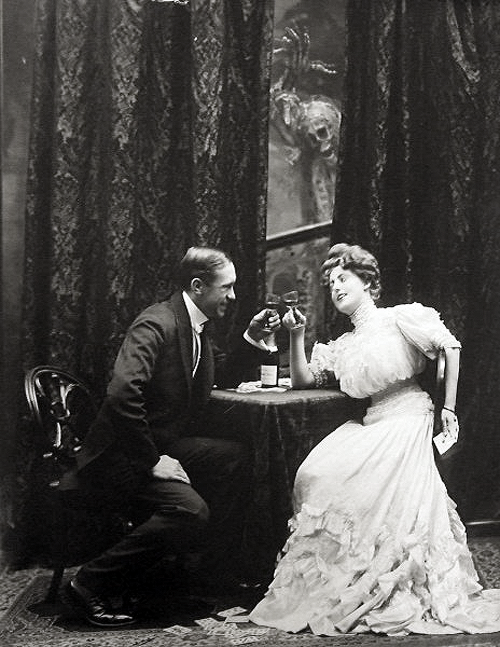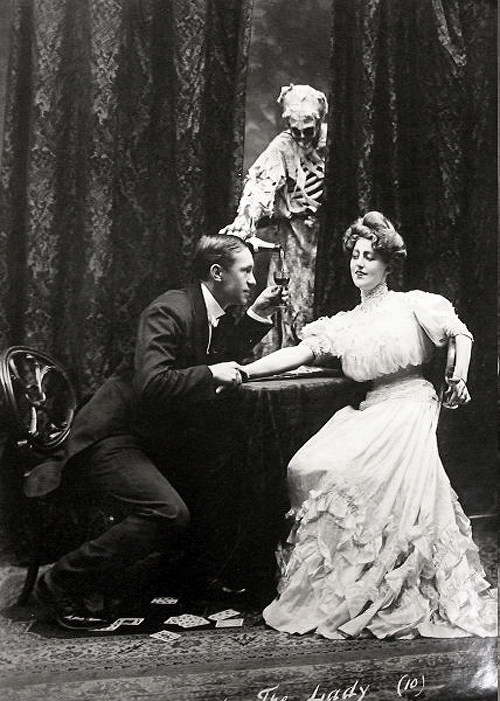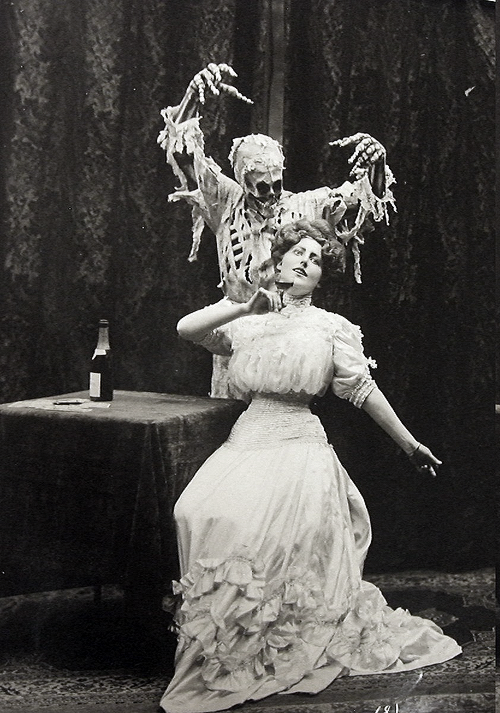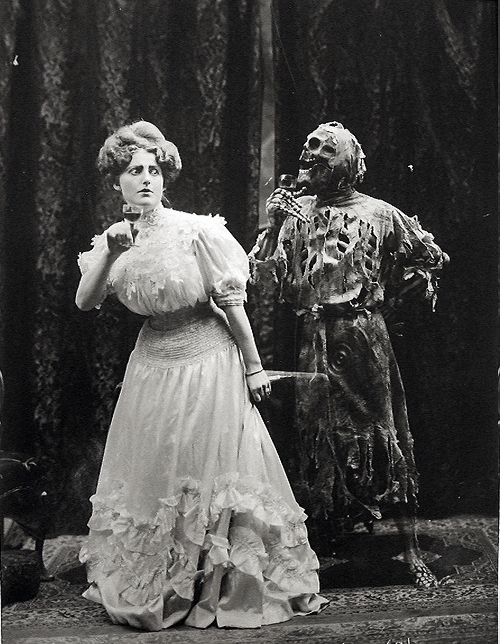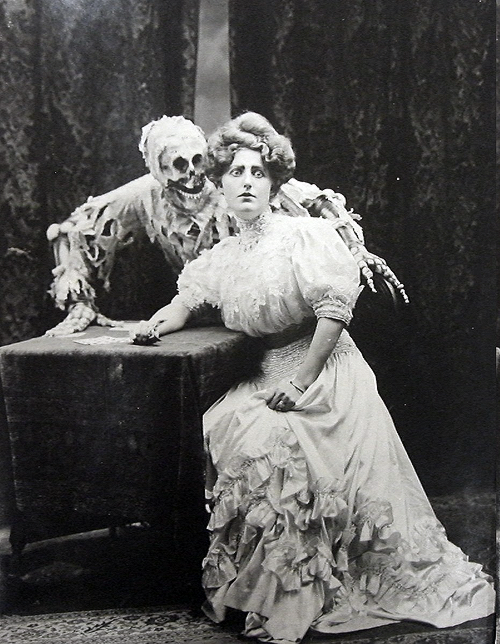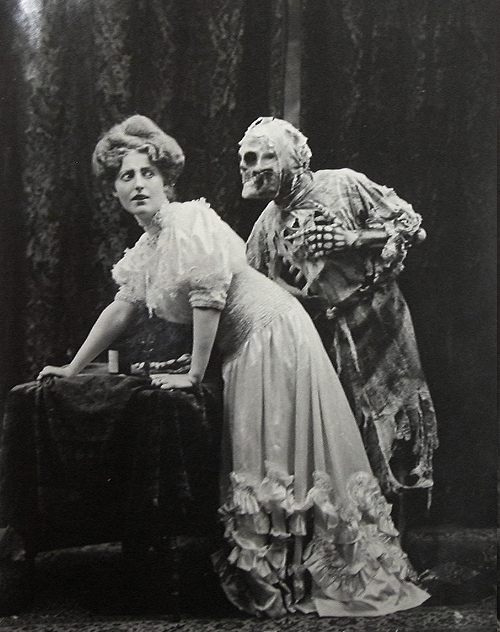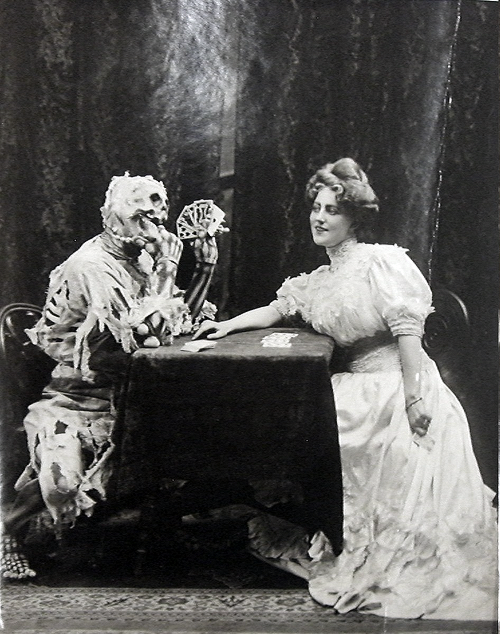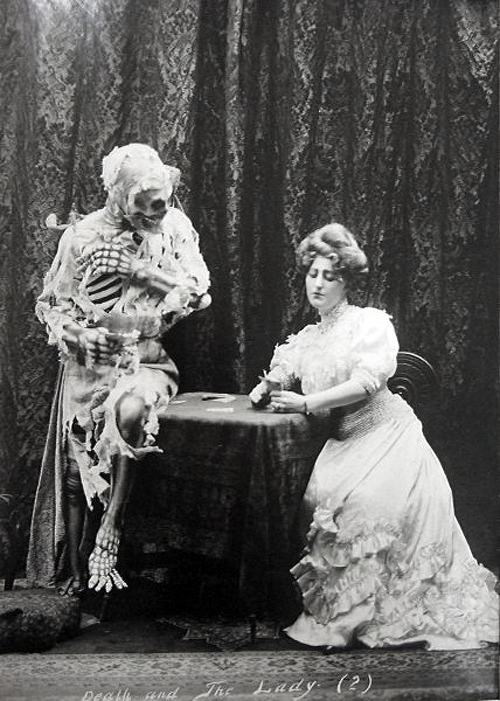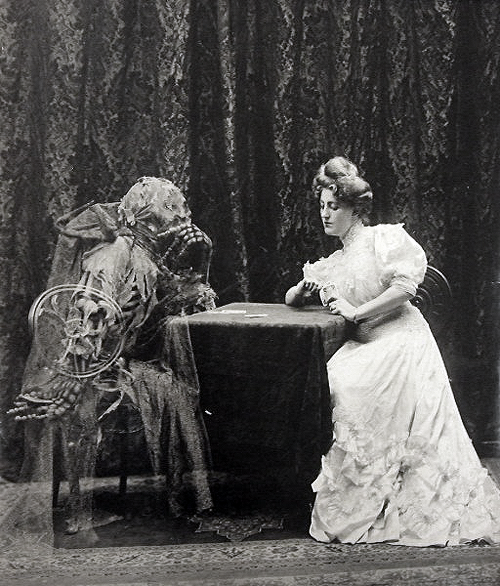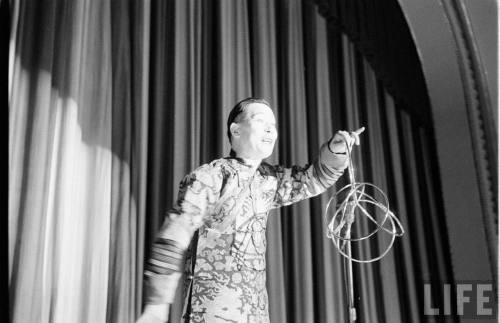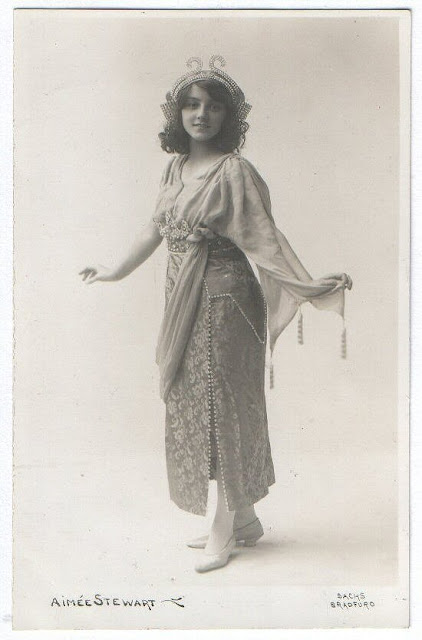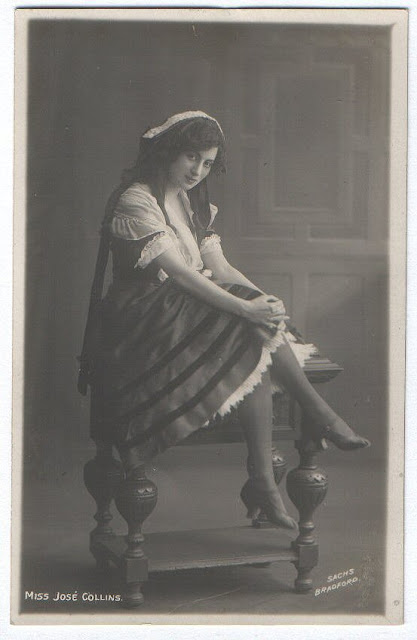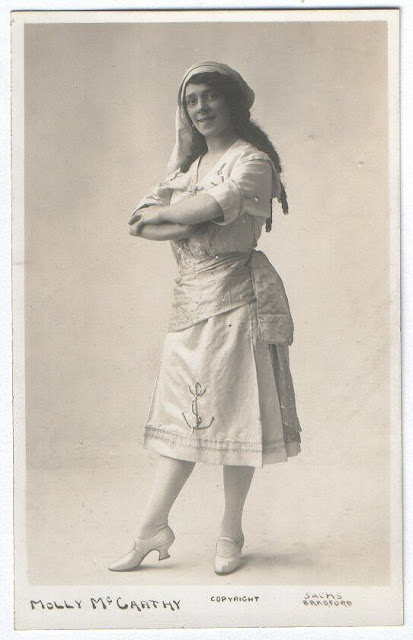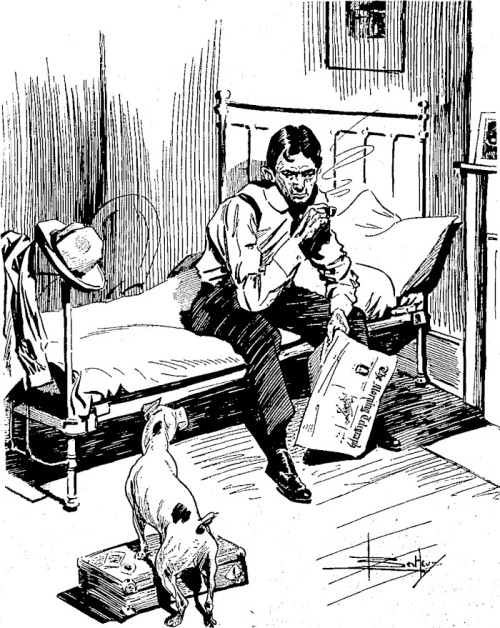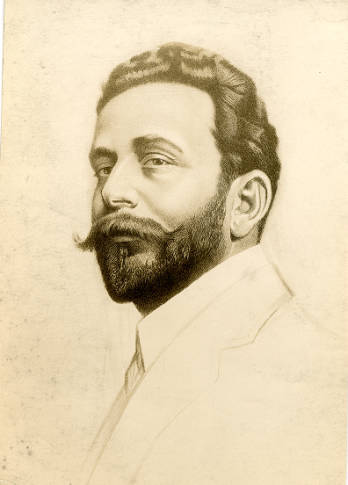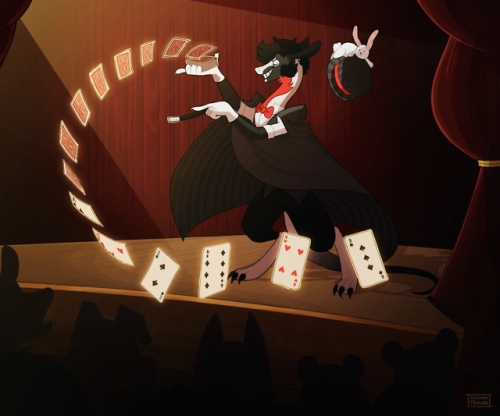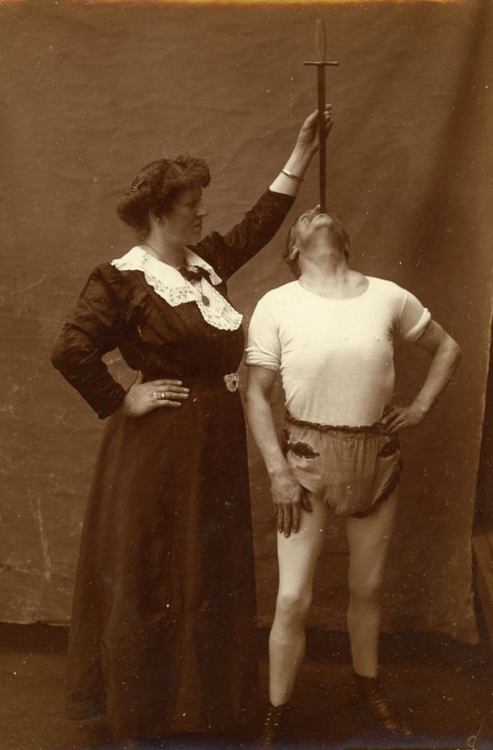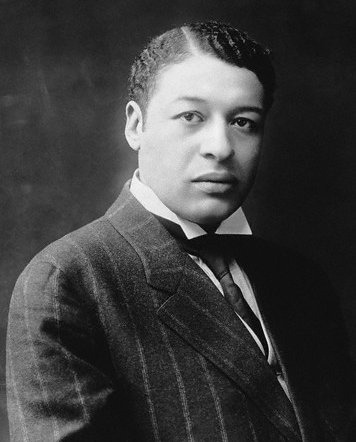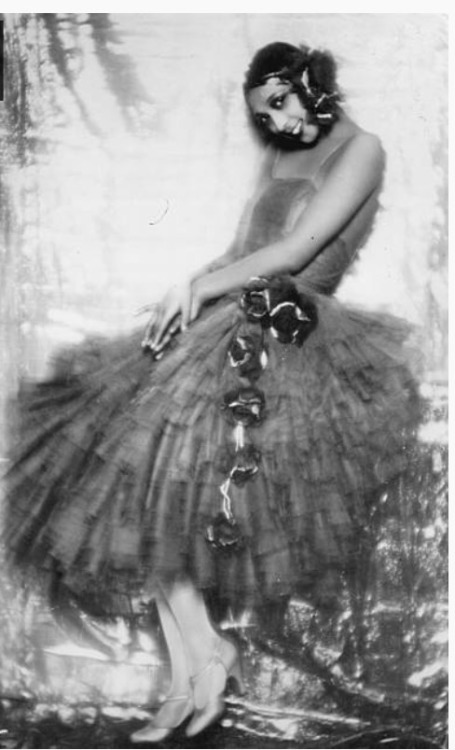#vaudeville
Our Vaudeville Film Series runs Thursdays in May, 7 p.m. Free!
Who Was Helen Keller: Her Passions and Interests
Welcome to part two of my mini-series on Helen Keller. I took a Disability in Literature class in Spring 2022 that focused heavily on her legacy.
In Part Three I will discuss the controversies you stumble upon when you research Helen Keller.
In this class I’ve learned that the idea we have of who Helen Keller was is not entirely accurate. A lot of people either see her only as the seven year old at the water pump, a scene made famous by the film The Miracle Worker. Or, they see her as this elderly woman who could do no wrong and only wanted to help others, that is the image the American Foundation for the Blind and other similar charities and organizations popularized.
There is about fifty years of interesting content lost in that disconnect and I’m going to bring some of it back. Helen Keller was a writer, a socialist, a suffragette, a dog-lover, a nature enthusiast, and a performer.
I’m going to show you pictures from her life and give you samples of her writing and let you hear her voice.
Excellent, accessible information about her as an actual person beyond the typical portrayal.
All pictures are of Bradford music hall artistes taken between 1900 and 1920
In a 1913 anonymous ‘autobiography’ was published, claiming to be the confessions of an Victorian music hall dancing girl, born in 1887 in Camden.
Although probably entirely fictional, the memoirs make tame reading. Apart from a trip to Spain, where the dancer is besieged by love sick 16-year-old Jose, there’s not a hint of loose behaviour. The main confession of this dancing girl is that theatrical life is actually a bit dull.
When she isn’t resting between jobs the dancing girl is enduring the “ordeal” of the music hall audition circuit, which sounds rather like a sinister Edwardian version of Britain’s Got Talent:
“Have you ever seen the crowd of anxious-looking women and girls waiting at the stage door of a theatre when the management has advertised for chorus ladies…a throng of expectant girls before the rehearsals of pantomimes, standing in the cold and rain of the dingy doors of the suburban or East-end theatres? More than once have I been one of those crowds.”
“One by one the aspirants for stage glory go before the brisk stage-manager, who is often too harassed and busy to appear polite or sympathetic “Let me try your voice/ Where’s your music?
"The trembling girl begins to sing at the piano. Perhaps by the end of the first verse the manager holds up his hand, and says “Thanks, that will do. I’m afraid you can’t sing well enough. Next please.
”…When you enter the theatre you find a crowd of artistes of all sorts on the stage. Some are already dressed and made up to go on. Everyone looks nervous. There is no joking or laughter; the performers talk in low tones in corners. In the dressing-room a number of girls and women are making up their faces.
“There is a faded woman, with dyed hair, trying to impart to her wan cheeks the bloom and attraction of youth with the aid of rouge, eyebrow pencils and powder. There are young girls who have never appeared on the stage. Some of these are in an agony of nervous fear, while others are absurdly confident of success.
"The room is overcrowded and close. There is a smell of grease paints and powder. One girl has forgotten her rouge; another has to run out and buy safety pins…The old hands are soon ready for the turn, and they go out on the dark stage and sit on any box or seat that is lying about the place. Meanwhile the stage manager is writing down names:
'Miss Nicely, are you there?’
The young lady clad in the tights and jewels of the 'principal boy’ comes forward smiling.
'You go on third, remember…Where are the Brothers Sleight?’
"Two knockabout comedians, in red wigs and quaint attire answer to the name. Then the gas is turned on and the footlights glitter, and, peeping from the wings, you see the directors taking their places in the stalls. They are a very ordinary collection of English gentlemen well-dressed and most elderly; but they appear awfully imposing, like a row of stern judges…
"The first turn is perhaps a conjurer; he is followed by a comic singer, and then I go on with three other girls, and we give our acrobatic 'number’. It is a terrible time. There is no applause, not a sign of approval from the keen-eyed gentlemen in the stalls. We come off hot and panting, wondering whether we have satisfied the directors. I peep from the wings and see the gentlemen talking about us. How I long to know our fate.”
From: Anon, The Confessions of a Dancing Girl By Herself (Arden Press, 1913).
Who Was Helen Keller: Her Passions and Interests
Welcome to part two of my mini-series on Helen Keller. I took a Disability in Literature class in Spring 2022 that focused heavily on her legacy.
In Part Three I will discuss the controversies you stumble upon when you research Helen Keller.
In this class I’ve learned that the idea we have of who Helen Keller was is not entirely accurate. A lot of people either see her only as the seven year old at the water pump, a scene made famous by the film The Miracle Worker. Or, they see her as this elderly woman who could do no wrong and only wanted to help others, that is the image the American Foundation for the Blind and other similar charities and organizations popularized.
There is about fifty years of interesting content lost in that disconnect and I’m going to bring some of it back. Helen Keller was a writer, a socialist, a suffragette, a dog-lover, a nature enthusiast, and a performer.
I’m going to show you pictures from her life and give you samples of her writing and let you hear her voice.
Writer
In her lifetime, Helen Keller published The Story of my Life (1903); The World I Live In (1908); My Religion (1927) and Midstream My Later Life (1929). There were also more than a dozen small essays published on the subject of socialism and labor rights.
While she was studying English literature at Radcliffe college, she was assigned small autobiographical writing prompts. Her professor liked them so much that he suggested she publish them and got her in contact with the editors of The Ladies’ Home Journal.
“The first part of The Story of My Life was written in the form of daily and fortnightly themes in English 22 at Radcliffe College under Professor Charles Townsend Copeland. I had no idea of publishing them and I do not remember how Mr. Bok became interested in them. I only know that one morning I was called out of my Latin class to meet Mr. William Alexander of the Ladies’ Home Journal If I remember rightly, Mr. Alexander said that Mr. Bok wished to publish The Story of My Life in monthly installments. I told him that it was out of the question, as my college work was all I could manage. His answer surprised me. “You have already written a considerable part of it in your themes."
"How in the world did you find out I was writing themes?” I exclaimed. He laughed and said it was his business to find out such things. He talked so optimistically about how easily the themes could be connected to form magazine articles that, without having a very clear idea of what I was doing, I signed an agreement to furnish the Ladies’ Home Journal with The Story of My Life in monthly installments for three thousand dollars. At the moment I thought of nothing but the three thousand dollars. There was magic in those three words. In my imagination the story was already written.” (Midstream My Later Life, Chapter 1, Tuning In, pp. 4-5)
After graduating college, Keller collected all the published pieces of The Story of My Life and sat down to organize them into a full autobiography. After rigorously editing the book, she republished it with new additions, including Anne Sullivan’s letters from her early education and copies of letters she had written when she was a child still learning language.
The money Keller received from publishing her autobiography allowed her to buy her own home in Wrentham, Massachusetts. A few years later she published more autobiographical essays detailing her own experiences navigating the world. It wasn’t just touch, sound, and taste. There are essays about everything she can understand about a person just by touching her hand, about vibrations and what they tell her, about her dreams. These essays were published as a collection and titled The World I Live In.
In the 1910s she published essays on socialism which I will explore more thoroughly in the next section.
Between 1927 and 1929, Keller sat down and chronicled all that the last thirty years had brought her in life, the highs and lows. In it you will find accounts of how she struggled with her career as a public speaker
Socialist
Keller was first introduced to socialism through New Worlds of Old by H. G. Wells, published in 1908. The book was recommended to her by Anne Sullivan, her teacher.
“I read it on Mrs. Macy’s recommendation. She was attracted by its imaginative quality, and hoped that its electric style might stimulate and interest me. When she gave me the book, she was not a socialist and she is not a socialist now” (How I Became a Socialist, 1912).
After finishing New Worlds of Old, Keller approached John Macy for new material. John Macy was Anne Sullivan’s husband and Keller was living with the couple at the time. Unlike his wife, he was an avid socialist with a mini-library of socialist literature. Keller subscribed to multiple socialist magazines. A few times a week a friend would visit her home and read the magazines to her via the manual alphabet.
The world did not respond to Keller’s socialism with delight. Newspapers ran wild printing out articles to respond to this. Some articles speculated that someone was using Keller like a puppet, piggy-backing off her fame to promote the socialist cause. Others argued that Keller’s interest in socialism was a sign of ignorance that stemmed from being deaf-blind and depending on someone else to tell her about the world around her. Macy and Sullivan were often accused of “poisoning Keller’s impressionable mind” with their socialist views. Another argument was that Keller’s interest in socialism stemmed from a deficit in her critical thinking abilities.
As Keller saw it, capitalism generated an abundance of human misery through exploitation. The extreme hours and intensity of labor meant failing health and early death for many. It meant that even when laborers returned home they had too little time to sleep and recover, let alone enjoy their free time. There was no time for family or caring for the home, meaning that living environments were unsanitary and worsened moral.
Keller also recognized that her family’s wealth and her education had given her a privilege to not experience this exploitation herself. But knowing she was safe from that suffering, an exception, was not a comfort.
“I know those men are hungry for more life, more opportunity. They are tired of the hollow mockery of mere existence in a world of plenty. I am glad of every effort that the workingmen make to organize. I realize that all things will never be better until they are organized, until they stand all together like one man. That is my hope of world democracy. Despite their errors, their blunders and the ignominy heaped upon them, I sympathize with the IWWs. Their cause is my cause. While they are threatened and imprisoned, I am manacled. If they are denied a living wage, I too am defrauded. While they are industrial slaves, I cannot be free. My hunger is not satisfied while they are unfed. I cannot enjoy the good things of life that come to me while they are hindered and neglected.” (In Behalf of the IWW, 1918)
And reading that, it’s easy to say “those are pretty words, but did she do anything for them?” Yes, she did. Just giving them her voice gave the IWW a platform. Keller was widely looked upon with admiration, her vocal support was one of the best gifts she could give to social justice causes. Moreover, she utilized the critical thinking skills she developed in college to reason with readers to see the necessity to support those causes.
Here is a link to the Marxist Archive where you can read Keller’s essays discussing socialism
Suffragette
Helen Keller entered her twenties in 1900, graduated from a women’s college in 1904, and became increasingly interested in human rights from 1910 and onward. Unsurprisingly, she was a suffragist. The fight to get women the right to vote was just as important to her as every other fight she participated in.

[Image Description: A newspaper clipping. The headline says: “Helen Keller Riding in the Great Parade of Suffragists in Boston Campaign.” Pictured in black and white is Helen Keller on the left beside another unidentified woman. Both women are wearing hats, and with the sun shining on their backs it casts shadows on their faces. Below the photo is the caption that says: “Helen Keller, shown at the left, was unable to see the crowds that lined Boston’s downtown streets for the recent suffrage parade, in which she was photographed, but her face beamed with smiles as she ‘heard’ the cheers for ‘votes for women’” End Image Description]
On June 11, 1916 Helen Keller spoke before the newly formed National Women’s Party, a political party focused on women’s suffrage. From this speech is where the quote “women’s inferiority is man-made” originates but this is my favorite part of the speech:
“The suffrage movement means more than votes for women. It stands for our solidarity. It embodies the ideals and aspirations of the millions of women who think, and whose intelligence and capabilities both men and women respect. We have prayed, we have coaxed, we have begged, for the vote, with the hope that men, out of chivalry, would bestow equal rights upon women and take them into partnership in the affairs of the state. We hoped that their common sense would triumph over prejudices and stupidity. We thought their boasted sense of justice would overcome the errors that so often fetter the human spirit; but we have always gone away empty handed. We shall beg no more. With the ballow [bludgeon or club] in our hands, we demand suffrage for all women.”
Keller was famously a pacifist who spoke out against entering the war during World War 1, but this call to arms (metaphorical arms) delights me.
Animal Lover
All her life Helen Keller had dogs by her side. From her earliest childhood years before Anne Sullivan, to her final years, she adored and doted on her dogs.
“Nobody, who is not blind, as much as they may love their pet, can know what a dog’s love really means. Dogs have travelled all over the world with me. They have always been my companions. A dog has never failed me.”

[Image Description: Ten year old Helen Keller in a white dress standing beside a chair. Sitting on the chair is a medium sized dog with a brown and white coat. The dog’s white chest and floppy ears are especially fluffy. Helen has her left hand touching the back of the dog’s neck while her right hand sits at her side. The background is a painted drop cloth used as a background in professional portraits. End Image Description]
Perkins could not confirm which dog this was, but their best guess is that we’re looking at Belle, the dog Keller described as her best friend in her childhood years.

[Image Description: Helen Keller between the ages of thirteen and fourteen. She is sitting with a bull mastiff by her side. The dog’s name is Lioness and she has a dark, shiny coat with a white streak crossing down her forehead and covering her snout. Lioness is positioned behind Keller, lounging with only her head and one front leg visible. Lioness gazes directly at the camera while Keller has her head positioned at a profile angle, chin up. Her hair is down with curls framing her face. End Image Description]
When Helen was attending Radcliffe College, some of her classmates took her on a small adventure into the city with the end goal of surprising her with a gift.
Another episode I like to recall was a surprise my class planned for me. One day several girls invited me to go with them to see some jolly friends in Brookline. That was all they would tell me, and when we reached our destination, they were very mysterious, I began to sniff, and in a moment I realized that instead of a human habitation we were entering a kennel, the abode of many Boston terriers.
The dogs gave us a royal welcome, and one ugly beauty, heir of a noble pedigree, with the title of Sir Thomas Belvedere, bestowed upon me his special favour, planting himself resolutely at my feet, protesting with his whole body if I touched any other dog. The girls asked me if I liked him. I said I adored him.
“Take him home then,” they said. “He is our gift to you."
Sir Thomas seemed to understand; for he began spinning round and round me like a top. When he had quieted down a little I told him I did not care much for titles. He assured me that he had no objection to changing his name, and when I told him that I was going to call him Phiz he rolled over thrice by way of showing his approval. So we carried him happily back with us to Cambridge. (Midstream My Later Life, You Oh Youth, page 18-19)

[Image Description: Twenty-two year old Helen Keller sitting while Phiz, a Boston bull Terrier sits on the table beside her. Keller is leaning forward and pressing her face to the dog’s side while her hands wrap around his chest. The dog has a dark coat with a white snout, chesk, and paws. His ears are short and pointed. Keller’s eyes are half closed while the dog looks off to the side. End Image Description]

[Image Description: Twenty-five year old Helen Keller sitting down with her body turned towards the black French bull terrier. This dog is assumed to be Kaiser, and his attention is fully on Keller, looking up at her fondly and bending his head forward to ask for more pets. Helen has her left hand touching the back of Kaiser’s neck, temporarily paused to hold still for the photo. Keller is wearing an Edwardian blouse with three quarter sleeve and a lace collar, as well as a striped skirt. Her clothing and the backdrop of the portrait are both light in color, making Kaiser stand out. End Image Description]

[Image Description: Helen Keller, Anne Sullivan, and Polly Thompson sitting on a fainting couch with a Great Dane named Sieglinde sitting in front of them. Sieglinde has a light coat with darker markings around her snout and ears. All three women are dressed in black dresses with white accents, each wearing her hair in finger waves, a style popular to the twenties. Thompson has her arm wrapped around Sullivan’s shoulder while Sullivan rests her hand on Keller’s. End Image Description]
In 1937 Helen Keller traveled to Japan for the first time. While there she first heard of akitas, a dog breed in Japan, and heard the story of Hachiko. “During her visit, she heard about Hachiko, a famous Akita who had died two years earlier. Hachiko was renowned for his exceptional loyalty. The dog had accompanied his owner to the train station every morning and met him there again every afternoon. Then one day, while away at work in Tokyo, the owner passed away. But that didn’t stop Hachiko. Until his own death almost ten years later, Hachiko went to the station every single evening to search for his beloved owner until his own death.” (link to American Kennel Foundation article quoted)
The Japanese government gifted Keller with an akita puppy named Kamikaze-Go.

[Image Description: Helen Keller and Polly Thompson fawn over an akita puppy named Kamikaze-Go. The dog is standing on his hind legs with his front paws balanced in Polly Thompson’s hands. His head is pressed up to Keller’s chest as he looks up at Thompson. Kamikaze-Go has light fur with dark markings around his snout and ears. End Image Description]
Keller was enamored with him, calling him “an angel in fur.”
Unfortunately Kamikaze-Go contracted canine distemper and died at seven months old. We modern dog lovers are lucky because now there’s a vaccine to prevent tragedies like this. Keller was devastated.
Two years later the Japanese government acquainted Keller with Kamikaze-Go’s younger brother, named Kenzan-Go. It was love at first sight. Keller nicknamed him Go-Go and doted on him. Through watching her, the American public became aware of the akita breed and began to love them too. Akitas became more popular in the U.S., became a recognized breed, and entered dog shows.

[Image Description: Helen Keller and Polly Thompson are seated together on a fainting couch, the same one from the photo of Keller, Sullivan, and Thompson over ten years ago. Go-Go lays on the ground by their feet. He has a medium colored coat that appears to get darker along his back and his ears. Keller’s right hand is wrapped around Thompson’s hand. Thompson looks almost directly at the camera while Keller looks to the side. End Image Description]
Nature Enthusiast
Keller’s love of nature started long before Anne Sullivan arrived in her life. Growing up on a post-Civil War plantation, there was an abundance of fields and gardens for Keller to explore on her family’s land. Keller’s most used senses were touch and smell and she received an abundance of stimulation in the fragrant gardens surrounding her home.
“I never smell daises without living over again the ecstatic mornings that my teacher and I spent wandering in the fields, while I learned new words and the names of things. Smell is a potent wizard that transports us across a thousand miles and all the years we have lived. The odor of fruits wafts to me my Southern home, to my childish frolics in the peach orchard.” (The World I Live In and Optimism - Chapter Six. Smell, the Fallen Angel)
In this chapter of The World I Live In, Keller approaches the subject of nature conservation, firmly planting herself as someone who believes the exploitation of natural resources such as lumber strips Mother Earth of the natural facets that make her so enjoyable to live on. The message is not new, Native American tribes have advocated for the preservation of natural resources for centuries and practiced sustainable living long before colonization began. Keller is adding her voice to the fight, and doing it in an emotional, sentimental way. She takes you through the moment of realizing the forest you love has been stripped into pieces for industry.
“The other day I walked toward a familiar wood. Suddenly a disturbing odour made me pause in dismay. Then followed a peculiar, measured jar, followed my a dull, heavy thunder. I understood the odour and jar only too well. The trees were being cut down. We climbed the stone wall to the left. It borders the wood which I have loved so long that it seems to be my peculiar possession. But today an unfamiliar rush of air and an unwonted outburst of sun told me that my tree friends were gone.”
When Keller bought her first home in Wrentham, Massachusetts, she had dreams of having her own farm. She kept chickens, had a horse, and planted an apple orchard. She wasn’t exactly skilled at farm labor, and in fact had more failures than success on that front. However, that relationship with nature gave her genuine happiness.
In Midstream My Later Life you’ll find mentions of adventurous hikes she took with Mark Twain on his property, getting lost and having to wander onto the main road to find their way back home.
“We [Keller with Anne Sullivan, her husband John Macy, and Mark Twain, referred to as Mr. Clemens] wandered on and on, forgetful of time and distance, beguiled by stream and meadow and seductive stone walls wearing their autumn draperies of red and gold vines a little dimmed by rain and snow, but still exquisitely beautiful When we turned at last, and started to climb the hill, Mr. Clemens paused and stood gazing ever the frosty New England valley, and said, "Age is like this, we stand on the summit and look back over the distance and time. Alas, how swift are the feet of the days of the years of youth.” We realized that he was very tired.
Mr. Macy suggested that he should return cross-lots and meet us on the road with a carriage. Mr. Clemens thought this a good idea, and agreed to pilot Mrs. Macy and me to the road, which he hadevery reason to suppose was just beyond that elephant of a hill. Our search for that road was a wonderful and fearsome adventure. It led through cowpaths, across ditches filled with ice-cold water into fields dotted with little islands of red and gold which rose gently out of the white snow. On closer inspection we found that they were composed of patches of dry goldenrod and huckleberry bushes. We picked our way through treacherously smiling cart roads. He said, “Every path leading out of this jungle dwindles into a squirrel track and runs up a tree.” The cart roads proved to be ruts that ensnared our innocent feet Mr, Clemens had the wary air of a discoverer as he turned and twisted between spreading branches of majestic pines and dwarfed hazel bushes. I remarked that we seemed to be away off our course. He answered, “This is the uncharted wilderness. We have wandered into the chaos that existed before Jehovah divided the waters from the land. The road is just over there,” he asserted with conviction. “Yes,” we murmured faintly, wondering how we should ever ford the roaring, tumbling imp of a stream which flung itself at us out of the hills.
“There was no doubt about it. The road was just there “where you see that rail fence.” Prophecy deepened into happy certainty when we saw Mr. Macy and the coachman waiting for us. “Stay where you are,” they shouted. In a few seconds they had dismembered the rail fence and were transporting it over the field. It did not take them long to construct a rough bridge, over which we safely crossed the Redding Rubicon, and sure enough, there was the narrow road of civilization winding up the hillside between stone walls and clustering sumachs and wild cherry trees on which little icicles were beginning to form like pendants. Half way down the drive Miss Lyon met us with tearful reproaches. Mr. Clemens mumbled weakly, “It has happened again the woman tempted me."
I think I never enjoyed a walk more. Sweet is the memory of hours spent with a beloved companion.” Midstream My Later Life, Chapter 4, Our Mark Twain pp. 61-63)
In The Story of My Life you’ll read about the outdoor lessons Anne Sullivan took Keller on, her first jaunt into the ocean, her experience riding horses and hiking through the woods with Sullivan and her sister.
“One summer I had my pony at Fern Quarry. I called him Black Beauty, as I had just read the book, and he resembled his namesake in every way, from his glossy black coat to the white star on his forehead. I spent many of my happiest hours on his back.
Occasionally, when it was quite safe, my teacher would let go the leading-rein, and the pony sauntered on or stopped at his sweet will to eat grass or nibble the leaves of the trees that grew beside the narrow trail. On mornings when I did not care for the ride, my teacher and I would start after breakfast for a ramble in the woods, and allow ourselves to get lost amid the trees and vines, with no road to follow except the paths made by cows and horses. Frequently we came upon impassable thickets which forced us to take a round about way. We always returned to the cottage with armfuls of laurel, goldenrod, ferns and gorgeous swamp-flowers such as grow only in the South.
Sometimes I would go with Mildred and my little cousins to gather persimmons. I did not eat them; but I loved their fragrance and enjoyed hunting for them in the leaves and grass. We also went nutting, and I helped them open the chestnut burrs and break the shells of hickory-nuts and walnuts—the big, sweet walnuts!” (The Story of My Life, Chapter 11)
Performer
In 1919 Helen Keller was offered the chance to play herself in a silent film about her own life. Taking a break from her hectic lecture tour, she traveled to California with Anne Sullivan, Polly Thompson and her mother, Kate Keller.
The film was a bit of a mess. The script was getting edited every day as producers drummed up new wild ideas to keep the audience interested. The film was a Frankenstein creation of fiction, documentary, and theatrical.
“We had not been long at work before we began to realize that there was very little drama in the story of my life. The chorus that surrounded Mr. Platt suggested that a mystical unfoldment of my story would be more interesting than a matter-of-fact narrative. When he said that it would be impossible to film they chanted that nothing was impossible to those who tried. - "Can’t you see,” they wailed, “that there has been no romance in Helen Keller’s life no lover, no adventures of the heart? Let her imagine a lover and follow him in fancy. The picture will be a dismal failure without excitement”
One of our experiments in getting excitement was to introduce a fight in which Knowledge and Ignorance contended fiercely for my mind at the entrance of the Cave of Father Time. The whole company went out to find a suitable location for the battle, and a spot that seemed fairly appropriate was chosen about forty miles away among the hills. It was more exciting than a real prize fight because one of the combatants was a woman. Ignorance, a hideous giant, and Knowledge, white and panting, wrestled on the hillside for the spirit of the infant Helen.
I held my breath when Ignorance hurled Knowledge over the cliff, wondering what insurance we should pay her if she was dead. Ignorance, laughing a bloodthirsty laugh, stretched his mighty limbs on the hill, while wild surmises ran from tongue to tongue. After what seemed an eternity, Knowledge’s pale brow appeared above the edge of the rocks. Apparently she was only a little breathless from her precipitous descent and laborious climb back to the battlefield. The fight recommenced fiercer than ever. Finally, Knowledge got Ignorance at a disadvantage, her floating garments having entangled him and thrown him to the ground. She held him down until he gave a pledge of submission. The evil genie then departed with a madman’s glare of hate into the shadows of the earth, while Knowledge covered the infant with her mantle of conscious light.
The mystic vapours of this performance distilled into an overflowing cup of optimism. It was now clear to the dullest of us that there was no limit to what might be wrought into the Helen Keller picture. Why waste time on a historic picture when the realm of imagination was ours for the taking?” (Midstream My Later Life, Chapter 12, I Make Believe I am an Actress, pp. 195-196)
How did Helen Keller act in her own scenes, you might ask…
“We worked at the Brunton studio under the direction of Mr. George Foster Platt, who was most patient with me. He devised a signal system of taps that I could follow and allowed plenty of time for Polly Thomson to interpret his direction to me. After general directions had been spelled into my hand, I was supposed to go through the action with the help of signal taps. “Tap, tap, tap” walk toward the window on your right “Tap, tap, tap” hold up your hands to the sun (a blaze of heat from the big lamps). “Tap, tap, tap” discover the bird’s cage; (I had already discovered the cage five times). “Tap, tap, tap” express surprise, feel for the bird, express pleasure. “Tap, tap, tap” be natural. In my hand impatiently: “There’s nothing to be afraid of ; it isn’t a lion in the cage it’s a canary. Repeat”
I was never quite at my ease when I posed. It was hard to be natural before the camera, and not to see it at that! I had little skill to throw myself into the spirit of the scene. There I sat or stood for a picture, growing hotter and hotter, my hands more and more moist as the light poured upon me. My embarrassment caused my brow and nose to shine unartistically. Instead of putting on a winning smile, I often discharged all life and intelligence from my countenance, and gazed stiffly into vacancy. When I became too absorbed in a difficult detail, like writing in large letters suited to the screen, I unconsciously frowned, and I believe that only the good nature of those about me saved my reputation for amiability. Besides, we had to go to the studio twice a day, and that meant “making up” and “unmaking” each time.” (Midstream My Later Life, Chapter 12, I Make Believe I am an Actress, pp. 189-190)
The film itself did not sell well. The film had reached too far into the absurd to keep audiences entertain. After its failure, Keller returned home. The next year she was given the opportunity to tour with Vaudeville.
Vaudeville, generally, is a type of theatrical performance for comedy. The Vaudeville tours in America were actually very much like what you imagine a circus would be. The show had dancers, musicians, acrobats, clowns, jugglers, animals, plays, and celebrities.
As a celebrity, Keller would give brief performances on stage with Anne Sullivan. Sullivan would explain how the manual alphabet worked, she would demonstrate translating for Keller, and Keller would repeat what Sullivan had said. Afterwards there was a time slot for questions.
“We returned to our home in Forest Hills and for two years lived quietly. But we were faced with the necessity of earning more money. The funds my friends had provided for my support would cease with my death, and if I died before my teacher, she would be left almost destitute. The income I had I could live on, but I could not save anything.
In the winter of 1920 we went into vaudeville and remained until the spring of 1924* That does not mean that we worked continually during all four years. We appeared for short periods in and around New York, in New England, and in Canada. In 1921 and 1922 we went from coast to coast on the Qrpheum Circuit.
It had always been said that we went into public life only to attract attention, and I had letters from friends in Europe remonstrating with me about “the deplorable theatrical exhibition” into which I had allowed myself to be dragged. Now the truth is, I went of my own free will and persuaded my teacher to go with me. Vaudeville offered us better pay than either literary work or lecturing. Besides, the work was easier in an essential respect we usually stayed in one place a week, instead of having to travel constantly from town to town and speak so soon after our arrival that we had no time for rest or preparation. We were on the stage only twenty minutes in the afternoon and evening, and the rules of the theatre usually protected us against the friendly invasion of the crowds who used to swarm around to shake hands with us at the lectures.
My teacher was not happy in vaudeville. She could never get used to the rush, glare, and noise of the theatre; but I enjoyed it keenly. At first it seemed odd to find ourselves on the same “bill” with acrobats, monkeys, horses, dogs, and parrots; but our little act was dignified and people seemed to like it I found the world of vaudeville much more amusing than the world I had always lived in, and I liked it. I liked to feel the warm tide of human life pulsing round and round me. I liked to weep at its sorrows, to be annoyed at its foibles, to laugh at its absurdities, to be set-a-thrill by its flashes of unexpected goodness and courage.” (Midstream, Chapter 13 The Play World, pages 208-209
Given what I said about it not being unlike your expectations for a circus, you can imagine why friends were concerned about Keller’s participation in the show. They believed that she was being exploited and turned into a “freak show,” which was completely at odds with all that Keller had tried to accomplish for the disabled community in decades past.
In terms of performance, Vaudeville wasn’t much different from the lectures Keller had toured cross-country to give in the 10+ years prior. The biggest difference was that the audience wasn’t so restricted, meaning that people who ordinarily couldn’t afford to attend her lecture before could afford it now. Vaudeville also had a labor union to protect the rights of performers and provide benefits.
“The audiences always made us feel their interest and friendliness. Sometimes many of them were foreigners, and could not understand what we said, but their applause and sympathy were gratifying. After my teacher had explained how I was taught, I made my entrance and gave a brief talk, at the end of which the audience was allowed to ask questions. Some of them were very funny. Can you tell the time of day without a watch? Have you ever thought of getting married? Have you ever used a ouija board? Do you think business is looking up? Am I going on a trip? Why has a cow two stomachs? How much is too many? Do you believe in ghosts? Do you think it is a blessing to be poof? Do you dream? There were hundreds of them.
I am always intensely conscious of my audience. Before I say a word I feel its breath as it comes in little pulsations to my face. I sense its appreciation or indifference. I found vaudeville audiences especially easy to speak before. They were much more demonstrative than most others, and showed instantly when they were pleased.” (Midstream, Chapter 13 The Play World, pages 214)
Advocate for the Blind
After four years Keller left the Vaudeville stage. Though she took joy in the energy and atmosphere of the stage, it did not make Anne Sullivan happy.
The American Foundation for the Blind (AFB) was founded in 1921 with the mission to represent the blind. They planned to advocate for accessibility and equal rights as well as source funding into research for the blind. In 1924 they hired Sullivan and Keller as ambassadors to raise interest in the AFB. The offer of steady-income was too good to resist.
The downside of working for the AFB is that they needed to please the men with deep pockets, capitalists who would be offended if Keller brought up socialism. If Keller wanted to generate enough funding to help the blind community get access to accommodations and education, she would have to set aside her politics, smile, and play nice.
Through the AFB, Keller was able to travel to new countries, speak to world leaders, and generate charitable donations to held the entire blind community. In return, the AFB provided Keller with both income and housing. After Polly Thompson died, they provided care-givers to help Keller through her day to day life even after she stepped away from the public eye.
They currently hold the largest online archive of Keller related content, including correspondence between her and others, newspaper clippings, transcripts of her speech, photos and much more.
You can visit the Helen Keller Archive here
About the author of this post:
Hello, I’m Mimzy. I run a writing advice blog and my most popular subject is teaching writers how to better write blind characters. This includes helping them build interesting blind characters, determine the limits and skills of their characters, brainstorm accommodations for them (especially in fantasy and sci-fi stories) and avoid ableist tropes and phrasing. I am a visually impaired writer and currently I’m in university studying English literature and Disability Studies.
“Stranded! : A Reminder of Days that are Only an Unpleasant Memory Now” ~ byBertLevy.
Illustration in the Vaudeville News,7 May, 1920.
BertLevy,vaudeville artist, photo of a pencil portrait, 1913; BertLevy,vaudeville artist, self portrait in ink, 1906. Written on the portrait:
“As Bert Levy sees himself. From the New York Morning Telegraph.”
(Selfportraitsfromthe NYPL Digital Collection)
Post link


BLACK HISTORY MONTH
Johnson & Dean
At the turn of the 20th century, Johnson and Dean were household names. Charles E. Johnson and his wife, Dora Dean, were among the world’s most famous vaudeville entertainers. And, they called Minneapolis home.
Charles E. Johnson grew up in Minneapolis. As a teenager, he worked at the Nicollet Hotel. His wife was born Dora Babbige in Kentucky. The couple met while performing as part of the same vaudeville troop in the late 1800s and soon decided to create their own show.
As Johnson & Dean, the pair were the first African American couple to appear on Broadway. The couple were a premier dance team, especially in their signature, elegant cakewalk. They were also the first vaudeville act to perform in full evening attire. Dora Dean’s dresses were famed for their beauty and expense – they often cost over $1,000! Not to be outshined, Johnson donned formal wear–complete with top hat and monocle – often in white or lavender. The couple were the first to introduce strobe lighting to their shows, and they may have been the first to use steel taps on their dance shoes.
The fame of Johnson & Dean spread far beyond Broadway. In addition to performances nationwide, the duo toured Europe several times. German painter Ernest von Heilmann painted a portrait of Dora Dean that was unveiled for the coronation of King Edward VII in 1902 and displayed at the Paris Expo. (In the photo above, an older Dora Dean is looking at a copy of this painting.) Dora Dean was even immortalized in song.
Johnson and Dean split up personally and professionally in the 1910s. Both tried solo careers, but without much success. In the 1930s, they made a brief comeback as a reunited dance team. They reunited romantically as well and retired to Minneapolis. The pair lived together at 811 36th St. E until Dora Dean’s death in 1949. Johnson continued to dance and anticipate a performance comeback until his death in 1956. Both are buried at Lakewood Cemetery.
Photos of Charles E. Johnson and Dora Dean in the 1940s from the Minneapolis Newspaper Photograph Collection in the Hennepin County Library Digital Collections.
“The day before Thanksgiving, the Cirkus van ("Thunderball”) was stolen from outside the Bindlestiff warehouse in South Williamsburg. It was found a week later: stripped, totaled, and unsalvageable. Will you help us replace it?“
Boosting this out there to anyone who’s reading. The Bindlestiffs are some of the flat out awesomest vaudevillians around, and they need to keep on the road!
http://us2.campaign-archive1.com/?u=26d1a18af396d1358ee283096&id=e81018c40e&e=c82ae4ce80
Post link
“Insider Tip about Pre-Sale Tickets… Yes they are usually Discounted… And often merely allow you to skip the box office line. But for the Producers/venues and promoters of events they are better than Antacids… When you put on an event you are laying hundreds or thousands of your own dollars on the line and a few hundred hours of your time and everyone else in the cast and crew’s time as well… That anxiety eats a hole in your gut until about half way through the event when you find out if you broke even or not. Until then you are distracted, anxious and sick to your stomach. Ulcers are common among "Show People”
High Presale Numbers let the promoter know in advance whether they stand a chance at breaking even. Whether their Event will be a success or not. They allow you to take a deep breath, Eat without getting a tummy ache and speak to people without being irritable.
If you would rather pay full price at the door because you want to support the artists/venues etc that bring you such amazing Live entertainment… Feel more than welcome to pay the difference in the ticket price when you get there… Donate the money to the band/actors etc… Or save it to buy Merchandise from the performers and venue.“
-Scary Pete
Buster Britches Presents Holiday Hi-Jinx!
This show will be bringing you the best of Sideshow and Cabaret that Richmond has to offer!
Featuring:
Buster Britches
The Unkillable Kilian
Fifi Fellacio
Jessica Von Incendia
Scarlet Starlett
Hosted by Ray Bullock!
Seen only at Fallout RVA!
https://www.facebook.com/events/745124042184227/?source=1
Post link
Just some shameless posts of me with Nadira Serenity of the Serenity Dance studio. She surprised me with a last-minute request to be the closing act of her circus themed review, at the small, but popular and growing Serenity Tribal Cafe review!
Seriously good stuff, and she gets such amazing performers as Alyssum Pohl, Madame Onça and more.
If you’re ever in Virginia, check it out.
http://www.sevencitiesdance.com/shows.html
Post link
My contribution to the awesome array of goodies for the raffle at Bitsy Buttons and Mark Slomski’s Bachelorette / Bachelor show!
Be there or be normal!
Post link
The one and only Thugsy Da Clown from the Crimes Against Nature show at The AlWays Lounge and Theater, New Orleans LA!
Photo courtesy of Reby Rae.
Post link
SINGE~New Orleans, one of the finest fire performance groups, and one of the finest groups I ever had the pleasure of performing with.
http://www.facebook.com/singenola
Post link
Before Edgar Wright and Wes Anderson, before Chuck Jones and Jackie Chan, there was Buster Keaton, one of the founding fathers of visual comedy. And nearly 100 years after he first appeared onscreen, we’re still learning from him. Today, I’d like to talk about the artistry (and the thinking) behind his gags. Press the CC button to see the names of the films.
For educational purposes only. You can donate to support the channel at
Patreon:http://www.patreon.com/everyframeapainting
And follow me on:
Twitter:https://twitter.com/tonyszhou
Facebook:https://www.facebook.com/everyframeapainting

